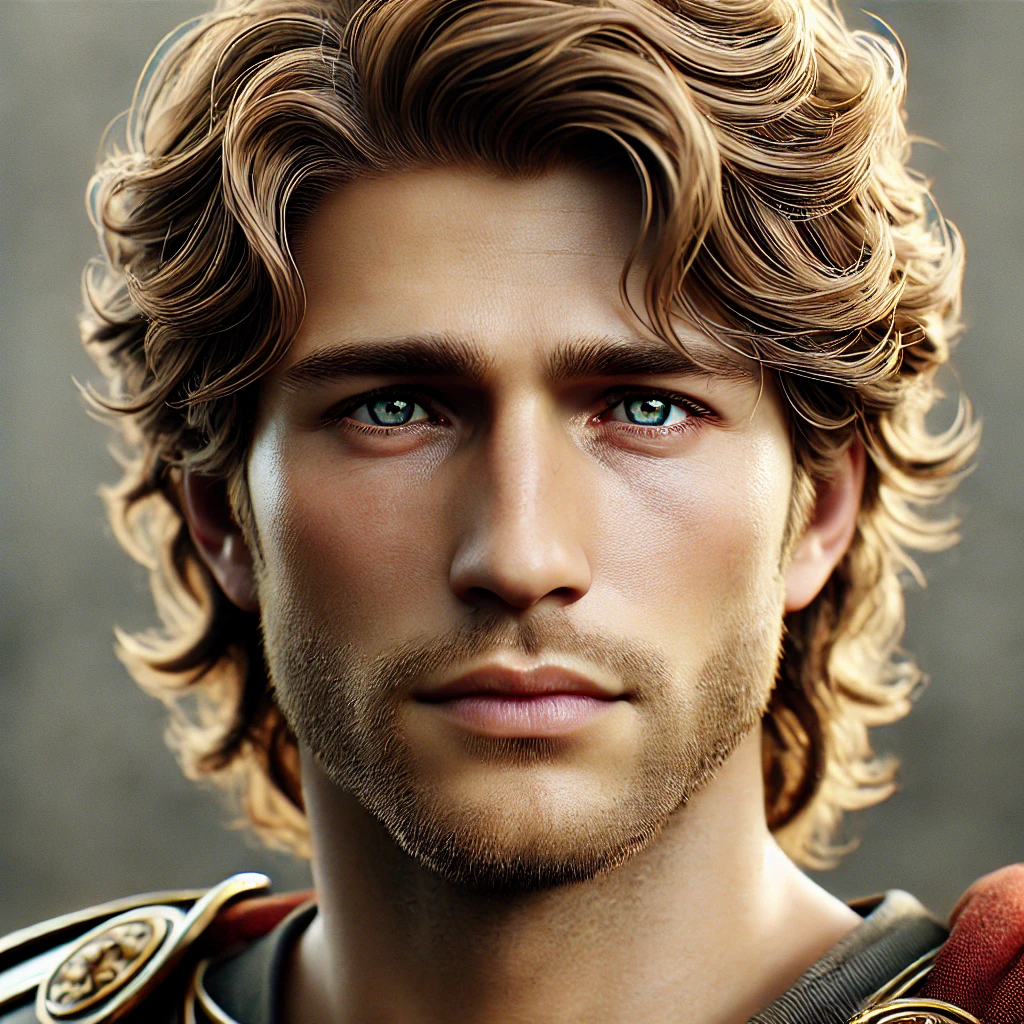Imagine a young warrior, commanding armies in his early 20s, marching across continents. Alexander the Great, though he lived over 2,300 years ago, left behind many descriptions, and those who saw him wrote vivid accounts of his appearance. Let me paint you a picture of what he looked like.

Physical Features
Alexander was described as a man of medium height, standing around 5’6″ to 5’8″ (1.67 to 1.73 meters). This might seem short by today’s standards, but in ancient Greece, it was quite average. His build was reportedly strong and athletic, reflecting his rigorous military training. His body was well-proportioned, and he was in excellent physical condition, capable of leading men into battle on foot or horseback for long stretches of time.
Hair and Eyes
One of the most distinctive features of Alexander was his hair. Historical texts tell us he had blond or light brown hair, and it was often portrayed as wavy or curly. There’s also an iconic image of him with his hair falling naturally across his forehead, giving him a lion-like, almost majestic quality. Some statues show his hair styled in an unruly, wild fashion, which could have added to his commanding presence.
His eyes were another striking feature. Some sources claim that Alexander had heterochromia, meaning one eye was brown while the other was blue or green. This rare trait, if true, only added to the mystique surrounding him. Ancient accounts say his gaze was intense, and when he looked at people, it felt like he could see right through them—captivating yet unsettling.
Facial Characteristics
Alexander’s face was youthful, clean-shaven, and he was known for his handsome features. His jawline was strong, suggesting a resolute nature, and he had a prominent nose, possibly slightly hooked, which was typical in Greek art. The combination of his boyish looks and strong features seemed to make him both approachable yet commanding.
He was often depicted with a slightly tilted head, possibly because of a famous portrait created by the sculptor Lysippus, who was known to capture Alexander’s likeness. This head-tilt became a famous characteristic of Alexander’s image in art, symbolizing his connection with the gods.
Complexion
Ancient texts describe Alexander’s complexion as fair, with a slight redness to his skin, which could have been due to his exposure to the sun during his numerous military campaigns. His complexion was said to give him a flushed, almost glowing appearance, which some interpreted as a sign of his divine favor.
Personality in Appearance
Beyond his physical traits, Alexander carried himself with a confidence that made him stand out in any crowd. His posture and the way he presented himself was regal yet approachable. Despite his youthful appearance, there was a sense of authority in how he moved and interacted with others. He had a charismatic aura, which made men follow him into impossible battles and earned him the loyalty of his army.
Alexander in Art and Sculpture
Numerous busts and mosaics created during or shortly after his lifetime give us a glimpse into how he was portrayed by artists. These artworks present him with youthful energy and a noble demeanor. One of the most famous depictions of Alexander is in the Alexander Mosaic from Pompeii, which shows him in the midst of battle, eyes wide with focus and intensity.
In sculptures, his head is often slightly raised, a detail that emphasized his self-image as being above mortal men, perhaps even reaching toward divinity. This artistic representation fed into his portrayal as not just a military genius, but almost a god-like figure.
A Unique Presence
To sum it up, Alexander was a handsome, youthful, yet strong and authoritative figure, with striking features like wavy hair, piercing eyes, and a complexion that reflected his time spent in the field. But beyond the physical, it was his presence, his aura of invincibility, that truly defined how people saw him. He commanded respect not just because of his looks, but because of the undeniable force of his personality. When you think of Alexander the Great, picture a young man who radiated both charm and power—a true icon of his time.

